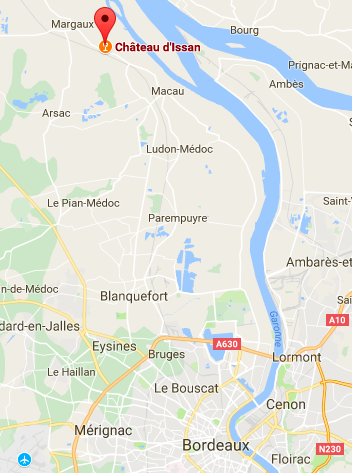Château Coutet
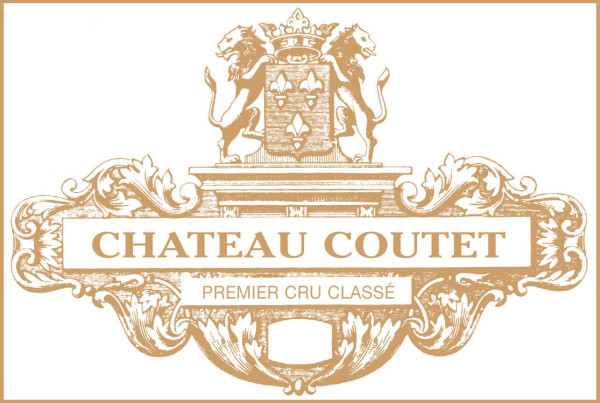
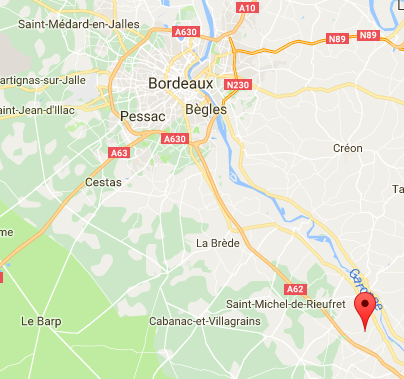
The Estate
Château Coutet is a large vineyard, the largest in Barsac in fact; the entire estate amounts to 42 hectares, of which 38.5 hectares are committed to the vine. The estate is bisected only by a narrow road which runs up through Coutet. The estate lies 12 meters above sea level, an almost mountainous altitude for this region.
Château Coutet vines’ deep roots extract elements from its terroir to give the grapes freshness, richness, and strength. For this reason the estate carries the name “Coutet,” derived from the Gascon’s word for knife, to signify the fresh, lively and crisp palate that is the wine’s signature style.
The Vines
The vines are 75% Semillon and 23% Sauvignon Blanc, and 2% Muscadelle. There is an ongoing program of replanting in order to replace older stock and keep the average age of the vines at about 35 years old. They are planted on the usual Bordeaux rootstocks, Riparia-Gloire and 420A, with a density of 7,500 vines per hectare.
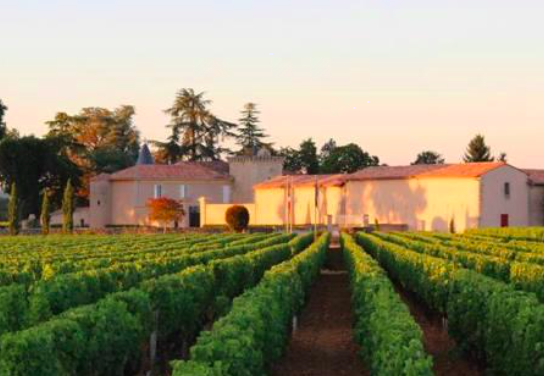
The Soil
As is typical of the Barsac vineyards, the soils underfoot are a mix of gravel and the classic red clay of the appellation over a limestone bedrock rich in starfish and shellfish fossils. The yields are typically 9 hl/ha, a remarkably low figure due to the botrytis-induced dehydration of the fruit, with the number of tries reaching double figures in some vintages, although the average number is six.
Vinification
The fruit is crushed using a traditional vertical press alongside a more modern cylindrical machine. The fruit is then transferred to 100% new barrels for fermentation. The blending will typically yield a wine that is richer in Semillon than the vineyard might suggest, with this variety typically accounting for 84% of the assemblage, with the rest being 14% Sauvignon Blanc and 2% Muscadelle. For some vintages, the amount of Semillon may be higher, up to 90%. The élevage will last for up to 18 months before bottling.
Wines and Production
The grand vin is Château Coutet, which has an annual production of up to 3,500 cases. The second wine, Chartreuse de Coutet, was first introduced in 1977 and has an annual production of about 400 cases. There is also a dry Graves, the Vin Sec de Château Coutet. The crème de la crème, however, is a super-selection named Cuvée Madame, only released in vintages of exceptional quality.
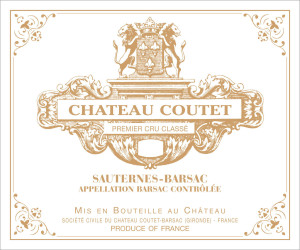
Château Coutet Sauternes-Barsac 1er Cru Classé
Production Area: 38.5 ha (95 acres)
Grape Varietals: Sémillon, Sauvignon Blanc, Muscadelle
Soil: Clay with a limestone sub-soil
Average Age of the Vines: 38 years old
Plantation Density: 7,500 plants/ha (3,000 plants/acre)
Vineyard Management: “Taille à Cot” (traditional Sauternes pruning), rational cultivation
Harvest: Manual with several tries
Average Yield: 9 hl/ha (0.9 ton per acre)
Aging: 18 months in French oak barrels (70-100% new wood)
Winemaker Notes: “In its youth, the wines display generous notes of white flowers, citrus fruits, honey and vanilla. Ginger and pineapple are very typical aromas in a young Château Coutet. Time brings out deeper, warmer notes in which spices combine with exotic nectars and candied fruits, such as gingerbread mingled with marmalade. Age also enhances the harmony of its roasted Botrytis character and its distinct aromas to give Château Coutet a delicate and unique bouquet that is unsurpassed.”
2017 Reviews: “This wine shows great balance and poised elegance. Its botrytis fruit gives it rich intensity, with a ripe orange-marmalade flavor and layers of tight acidity. This will be a wine for serious aging and not ready to drink before 2024.” – 96pts, Wine Enthusiast
2016 Reviews: “This wine is dense, mingling spicy nutmeg along with superb ripe honey and marmalade flavors. With its balanced acidity and opulence, it is going to be a great wine.” – 96pts, Wine Enthusiast
2012 Reviews: “Broad and honeyed, with lots of warm piecrust, orange zest, glazed apple, peach and almond cream notes. The finish lingers with orange and date accents, while a hint of citrus oil imparts good spine. Rather flattering today, but has the energy to develop with time.”-92pts, Wine Spectator
2010 Reviews: “…pale lemon-gold in color with a nose that explodes with decadent pineapple, mango and lemon meringue pie notes with touches of acacia honey, candle wax and yuzu. Full-on opulent in the mouth, the palate sings with concentrated citrus and tropical fruit layers, finishing long and honeyed.”-95pts, Wine Advocate
Château Croix Figeac

Saint-Émilion Grand Cru
The Soil: Well drained, sandy alluvium with a gravel and clay-limestone layer which retains heat well.
The Vines: The vines have a southern exposure and have an average age of 35 years; production is deliberately limited in order to ensure quality worthy of a grand Saint-Emilion Grand Cru. The vineyard is composed of 80% Merlot and 20% Cabernet Franc. Harvest is manually done.
Vinification: After the harvest, pre-fermentation takes place just before the vatting. After fermentation, the wine ages in partially new barrels for 12-16 months. Fining, no filtration.
Annual Production: About 48,000 bottles
2012 Reviews: “This has a fleshy feel, with dark plum and steeped currant fruit rolling along, while substantial but velvety tannins cruise underneath. Ample ganache and Black Forest cake details show on the finish, but a good tug of graphite keeps this honest. Drink now through 2021.”-90pts, Wine Spectator
Château Croizet-Bages
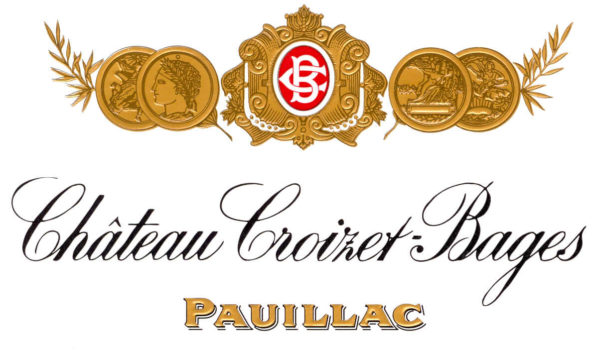
The Estate
In the early 18th century, the Croizet brothers, both members of the Bordeaux parliament, consolidated a number of small vineyard plots in order to form a wine estate in the famous hamlet of Bages, in Pauillac. This estate was included among the fifth growths in the famous 1855 classification under the name of Château Croizet-Bages.
Jean-Baptiste Monnot, an American citizen and owner of the famous Klaxon brand, acquired Croizet Bages soon after the World War I. He in turn sold it to Paul Quié, owner of châteaux Rauzan-Gassies (a great growth of Margaux) and Bel Orme Tronquoy de Lalande, in 1942. Monsieur Quié undertook a renovation of the vineyard during the postwar period. This was completed by his son, Jean-Michel, who took over management in 1968.
Jean-Michel Quié is now assisted by his children, Anne-Françoise and Jean-Philippe, in overseeing the 3 family châteaux. Their passion for fine wine is very much in the tradition of the great growths of Bordeaux, and one of Jean-Michel Quié’s greatest pleasures is to share his wine with people who are dear to him.

Château Croizet-Bages Pauillac 5ème Grand Cru Classé
Location: Situated on the plateau of Bages, immediately south of Pauillac
Production Area: 30 hectares
Soil: Deep gravel and sand
Grape Varieties: 62% Cabernet Sauvignon, 28% Merlot, 6% Petit Verdot, 4% Cabernet Franc
Average Age of Vines: 35 years old
Plantation Density: 6,600-8,000 vines/hectare
Average Yield: 55 hl/ha
Annual Production: 80,000 bottles
Harvest: Manual and mechanical harvesting
Vinification: Vinified in traditional cement vats; malolactic fermentation takes place in tank
Aging: 12 months in barrels, 50% of barrels of one year and 50% of barrels of 2 years. French oak, medium soft heat. Racking dodge every 3 months on average. Collage with egg white.
2018 Reviews: “This wine continues a good run for Croizet Bages with the depth and persistency you want from a Pauillac estate. It’s enjoyable and well put together with high levels of freshness and tannins that are evident without being overpowering. It’s not quite at the 2016 level for me, and has less complexity than some in 2018, but I’ve tasted on several occasions always with the same positive impression – it’s very good. While it’s a little subdued right now, I upped the score of the 2016 when tasting in bottle so it may be that it just needs a little time to bed down over ageing. 50% new oak used.” – 91pts, Decanter
2015 Reviews: “A touch of rusticity on the attack, there is good fruit here with silky cassis, firm tannins, and even a touch of violet on the nose. This has been carefully handled, making the most of fruit that lacks some of the succulence of other parts of Bordeaux in 2015.” – 90pts, Decanter
“This wine is tough and extracted, with dark-chocolate flavors as well as tannins. Its hard outer shell is rescued by the ripe black-currant fruits of the Cabernet Sauvignon in the blend. Drink from 2025.” – 90pts, Wine Enthusiast

La Gabare de Croizet-Bages
Overview: La Gabare de Croizet-Bages is the second wine of Chateau Croizet-Bages and is made up of the Château’s younger vines.
Production Area: 28 hectares
Soil: Gravel
Average Age of the Vines: 10 years
Grape Varieties: Cabernet Sauvignon, Merlot, Cabernet Franc
Harvest: Manual and mechanical harvesting
Vinification: Traditional; fermentation at controlled temperatures.
Aging: 12 months in barrels, 50% of barrels of one year and 50% of barrels of 2 years. French oak, medium soft heat. Racking dodge every 3 months on average. Collage with egg white.
Tasting Notes: Delicate bouquet enhanced with a touch of finesse. Very round and fruity on the palate; a very feminine Paulliac.
Cellaring Potential: 15 years
Château d’Issan
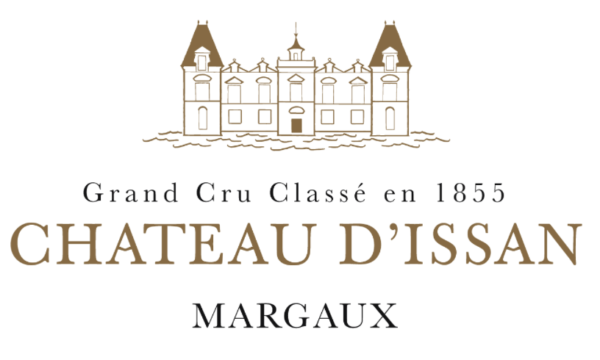
Overview
Château d’Issan is a castle and winery in the Margaux appellation of the Bordeaux region of France. The wine produced here was classified as one of fourteen Troisièmes Crus (Third Growths) in the historic Bordeaux Wine Official Classification of 1855. The winery is under the proprietorship of Emmanuel Cruse, of the Cruse family. In February 2013, 50% of the estate was purchased by Jacky Lorenzetti, who also owns Château Pédesclaux in Pauillac & Chateau Lilian Ladouys in Saint-Estèphe.
History
At the very beginning, there was a fortress in the seigneury of La Mothe-Cantenac. The 12th century building was demolished five hundred years later by Baron d’Essenault when he inherited the estate. In its place he had the present property built, which today still has some beautiful medieval features, such as its imposing gateway, its towers and its moat, relics of its former defences. A wall built in 1644 still surrounds the vineyard. The chateau is lived in today, having undergone several phases of renovation. In 1970, after the Cruse family undertook refurbishment work, the chateau was included on the French complementary list of historical buildings.
The Terroir
Acreage : 59 Ha
44 Ha Margaux
5 Ha Haut-Médoc
10 Ha Bordeaux Supérieur
Planting density: 8.500/Ha
Château d’Issan is in the middle of the Margaux appellation, a truly privileged location, which explains the outstanding quality of its wines. The mild weather, regulated by being close to the sea and the Gironde Estuary, provides ideal conditions for vine growth. The soil is made up of mounds of gravel and 15-metre (50-foot) high alluvial hills, rounded by erosion. Nothing much remains of the pre-Revolution estate: bad weather, wars and phylloxera outbreaks took a heavy toll over the centuries. Today’s vines are 35 years old on average and result mainly from the Cruse family’s restoration efforts after 1945.
Vinification
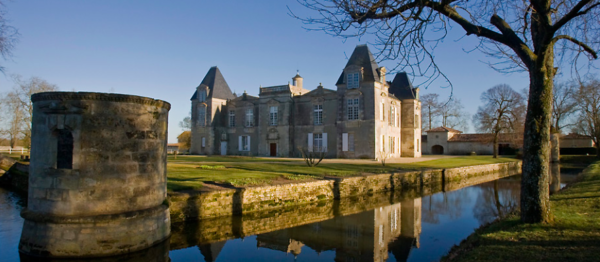 The vines at Château d’Issan benefit from close, on-going care designed to produce perfectly ripe grapes. Everything is organised so that each individual plot can be tended independently in order to get the very best out of its fruit. In winter, the specific Medoc pruning method is applied in conjunction with intimate knowledge of the vines to regulate the coming year’s production. In spring, traditional tilling is carried out, improving air and water circulation thereby ensuring that activity in the soil starts up again naturally and for maximum benefit. This is followed by desuckering and the elimination of secondary shoots to stimulate ripening of the bunches. The removal of green fruit and leaves ensues and continues on to summer with the aim of ensuring good grape concentration. As soon as the harvest arrives in the vathouse, we initially sort the bunches, then the grapes are screened a second time on a vibrating table and gravity-fed into separate tanks to preserve the distinctive characteristics of the different plots in the vineyard. We have invested in 37 temperature-controlled stainless steel tanks with capacities from 70 to 200 hectolitres.
The vines at Château d’Issan benefit from close, on-going care designed to produce perfectly ripe grapes. Everything is organised so that each individual plot can be tended independently in order to get the very best out of its fruit. In winter, the specific Medoc pruning method is applied in conjunction with intimate knowledge of the vines to regulate the coming year’s production. In spring, traditional tilling is carried out, improving air and water circulation thereby ensuring that activity in the soil starts up again naturally and for maximum benefit. This is followed by desuckering and the elimination of secondary shoots to stimulate ripening of the bunches. The removal of green fruit and leaves ensues and continues on to summer with the aim of ensuring good grape concentration. As soon as the harvest arrives in the vathouse, we initially sort the bunches, then the grapes are screened a second time on a vibrating table and gravity-fed into separate tanks to preserve the distinctive characteristics of the different plots in the vineyard. We have invested in 37 temperature-controlled stainless steel tanks with capacities from 70 to 200 hectolitres.

Château D'Issan Margaux 3ème Grand Cru Classé
Overview: Château d’Issan is a Third Growth of the 1855 Imperial Classification. The wine is made from the old vines in the Château d’Issan enclosure in the middle of the Margaux appellation.
Soil: The soil here is mainly made up of surface gravel on top of a clay subsoil, which contributes to optimal ripeness and freshness in the two grape varieties.
Grape Varieties: Cabernet Sauvignon and Merlot
Tasting Notes: Château d’Issan expresses the exquisite bouquet so characteristic of Margaux, and stands out with its suppleness, subtlety, elegance, and long keeping potential that come from its unique terroir.
Aging: Château d’Issan is aged in barrels for 16 to 18 months, half of which are new.
Annual Production: Around 100,000 bottles
2013 Reviews:
“Young but open, with evident depth to the fruit, easy to drink now – plenty of enjoyment to be had here. Often compared to the 2007 but I’m not sure that it will age as well – one to enjoy over the next decade.” – 91pts, Decanter

Blason d’Issan
Overview: Blason d’Issan, our second wine, was introduced from 1995 onwards to enable selection amongst our vines growing in the Margaux appellation area. Fruit from our youngest vines is used to produce this wine, which respects the identity of its terroir, while offering a tasty round fruitiness, which can be enjoyed earlier.
Blend: Cabernet Sauvignon 60%, Merlot 40%
Average age of the vine: 18 years old
Production: 5.000 cases per year
Aging: Blason d’Issan is also aged in barrels for 14 to 16 months, one third of which are new.
Production: Annual production is around 120,000 bottles.
2015 Reviews: “…bright, quite vivid bouquet with perfumed dark cherry and blueberry scents, a hint of pencil lead in the background…Harmonious in the mouth and disarmingly silky in texture, do not let its second wine status get in the way of noticing the structure towards the finish. This is a very well-crafted Blason d’Issan that follows their very fine deuxième vins in both 2010 and 2012.”-91pts, Wine Advocate

Moulin d'Issan Bordeaux Supérieur
Overview: The Bordeaux wine growing area is known for its variety of soil types and sub-soils. To the right of the historic path that leads to Château d’Issan are the Bordeaux Supérieur AOC plots. They are the closest to the Gironde Estuary. The soil there is mainly clayey limestone and therefore particularly suited to the Merlot grape variety, which dominates in this part of the vineyard. Generally, it contributes 90% of the blend, which is unique in the Medoc. The ruins of the old 17th century windmill, which gave this wine its name, are still in the middle of the vineyard. This wine expresses the richness, the suppleness and the fruit of its origins; it has been on the market since 1988.
Grape Varieties: Merlot 90%, Cabernet Sauvignon 10%
Harvest: Hand picked at end of September through October
Aging: 14 months in 25% new barrels
Annual Production: About 40,000 bottles
pH: 3.77
Total Acidity: 3.40 g/L
Alcohol Content: 14%
Tasting Notes: Shows an expressive and crunchy red fruit character with a deep color. The finish is very well balanced with fine tannins.
Château d’Yquem
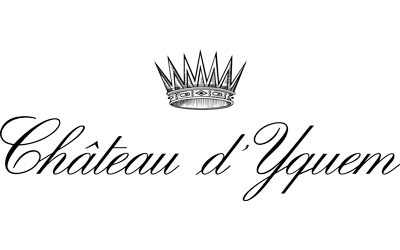
The Estate
The history of Château d’Yquem is like a novel, an epic saga full of events and colorful personalities spanning more than 4 centuries. Château d’Yquem was almost English. During the Middle Ages, in fact, the estate belonged to the King of England, who was also Duke of Aquitaine at the time. In 1453, southwest France was once again brought under the dominion of the French crown by Charles VII and has stayed French ever since. A century and a half later, in 1593, a descendent of a local noble family, Jacques Sauvage, was given feudal tenure over Yquem. The Gironde department archives, as well as those of the château, show that special winegrowing practices and late harvesting already existed at this time. A few years later, the Sauvage family built the château and patiently set about constituting the present-day vineyard, plot by plot. The family became full owners of Yquem in 1711, during the reign of Louis XIV (by which time they had received noble status). In 1785, Françoise Joséphine de Sauvage d’Yquem married Count Louis Amédée de Lur-Saluces. 3 years later, in 1788, the count died after a riding accident. His young widow thus became the head of the family and showed extraordinary acumen in managing the estate. The wine was already much appreciated by famous connoisseurs of the period, such as Thomas Jefferson. A staunch opponent of the excesses of the French Revolution who was thrown into prison on two occasions, Françoise Joséphine managed to hold on to the family property and make Yquem prosper. She built a new wine cellar in 1826 with her steward Garos – an audacious step at the time – transforming the estate into a true business and developing its international reputation. It was during her time as head of Yquem that the method of picking in several passes was perfected.
Romain-Bertrand de Lur-Saluces, Françoise-Joséphine’s grandson, took his role as manager of Yquem very much to heart, rather than simply taking possession of the family estate, which had become mythical by this time. In 1855, in posthumous recognition of the tremendous accomplishments of “the lady of Yquem”, the estate was designated the one and only premier cru supérieur in the famous classification made at the request of Emperor Napoléon III.
Yquem went through a long period of prosperity in the latter half of the 19th century. People all over Europe went to great lengths to search out the wine. Great Duke Constantine, brother of the Tsar of Russia, made the headlines by paying 20,000 gold francs for a barrel of Château d’Yquem – an unheard of price at the time. Japan, which opened up to foreign trade during the Meiji dynasty, also discovered the pleasures of Yquem. After Romain-Bertrand’s death, his son, Marquis Amédée de Lur-Saluces, took over, followed by his younger brother, Eugène. This phase of Yquem’s history ended with 2 dramatic events: the phylloxéra crisis and the First World War. In 1914, Yquem played a role in the war. The château was transformed into a military hospital while Marquis Bertrand de Lur-Saluces, son of Eugène, became an officer in the trenches, in keeping with the family tradition. At the end of the war, at age 30, he took over managing the estate and continued in this capacity for a momentous half-century. Bertrand was a man of character and a staunch guardian of the Yquem philosophy. He was opposed to chaptalization and courageously defended the family estates, even during the dire recession of the 1930s. President of the Union des Crus Classés de la Gironde for forty years, he was instrumental in determining many legal aspects of the Sauternes appellation. He was also one of the leading proponents of château bottling to guarantee authenticity. An enlisted officer in the Second World War, Bertrand de Lur-Saluces was captured and held prisoner for 2 years. However, he was fortunate enough to return to his beloved estate as soon as he was freed. He did much to develop Château d’Yquem, particularly as regards its international impact, until his death in 1968.
Childless and anxious to protect the future of Château d’Yquem, Bertrand de Lur-Saluces took measures in anticipation of his demise. In 1966, he designated one of his brother Amédée’s sons, Alexandre de Lur-Saluces, to take over managing the estate.
The young count did not have an easy time at first. He had to deal with a series of bad vintages, a profound crisis in the Bordeaux wine trade, and an impressively high inheritance tax that threatened d’Yquem’s survival. The estate was saved thanks to rigorous management and the excellent 1975 vintage, on the heels of 3 disastrous ones. Several fine vintages during the 1980s made it possible to put things back on an even keel and make new investments. Production slowly increased over 15 years, as did quality and technical expertise. At the end of the 20th century, thanks to the impetus of Bernard Arnault, Château d’Yquem – a veritable monument, and among the greatest wines of France – was acquired by LVMH Moët Hennessy-Louis Vuitton. This marked a new chapter in the château’s history.
Since then, he has continued to promote the estate’s authenticity, its openness to modernity, and the expertise of the winemaking team.

Château d'Yquem Sauternes 1er Grand Cru Classé
Viticulture: Fertilizer is exclusively organic and used sparingly; only 20 hectares are fertilized per year. This compost maintains the soil’s natural equilibrium while keeping it from becoming too rich or fertile, as this would prevent the vines from producing wines of character. Chemical weed killers are never used. The soil undergoes regular cycles of manual work: earthing up twice a year, unearthing twice a year, and countless other vineyard operations. The vines are severely pruned in early winter to limit yields and encourage maximum ripeness. Château d’Yquem’s 20 female vineyard workers are each assigned specific plots, so they become familiar with virtually each vine. Among other duties, they are responsible for green pruning operations such as bud pruning as well as tying up and removing side shoots. The final touch before the vintage is leaf thinning on the eastern side of some 700,000 vines so the grapes dry more quickly in the morning while continuing to protect the western side most exposed to rain.
Harvest: Château d’Yquem’s goal is to obtain musts with 20° potential alcohol (360 grams of sugar per liter). It is a daring gamble to obtain such concentration naturally, implying a long wait with the very real risk that the entire harvest may be lost as winter approaches. An increase from 18 to 20° alcohol decreases the volume of juice by an average of 50%. This largely accounts for Yquem’s extraordinarily low yields (9 hectoliters per hectare on average). Grapes have been harvested the same way at Château d’Yquem for centuries. The pickers scour the entire vineyard for grapes that are both botrytised and have attained maximum concentration. There are an average of 5 or 6 passes per vintage, spread over 6 weeks.
Vinification: It takes no more than 1 hour for grapes picked at Château d’Yquem to arrive at the cellar. Pressing takes into account the texture and fragility of the fruit. The grapes are pressed 3 or 4 times at Yquem. As opposed to other white wines, the sugar content and quality increase with each pressing. The first pressing in a pneumatic wine press produces 75% of the total juice, with about 19° potential alcohol. The second yields 15% of the total juice, with about 21° potential alcohol, while the third can reach up to 25°. The hard cake of pomace is then broken up, destemmed, and put through a low-capacity vertical press. Wines from the various pressings are blended before barrel fermentation. Unusually in Sauternes, fermentation at Yquem takes place in barrel to maintain maximum control over this most delicate and mysterious part of winemaking. Only new barrels are used each year. These are made with the finest stave oak from forests in the eastern part of central France. Each individual barrel is closely monitored, and the château’s in-house laboratory carries out regular analyses. The most active musts finish fermenting in just two weeks. However, others can take up to six weeks. Fermentation stops naturally in all instances. The alcohol content at Château d’Yquem varies from 12.5° to 14.5° according to the sugar content of the must. The ideal figure is 13.5° with 120 to 150 g/l of g/l of residual sugar.
Aging: Wine made from grapes picked on the same day is aged separately for 6 to 8 months. A preliminary blend is made from selected batches in the spring following the harvest. After taste tests and laboratory analyses, wines not up to the château’s strict standards are set aside. The barrels that have been retained are then moved to the aging cellar where they will stay for 20 months. Every barrel is topped up twice a week. This consists of adding wine to fill up the airspace created by evaporation at the top of the barrel. Furthermore, every barrel is racked 15 times to remove heavy lees. Light sediment in suspension is removed by a process called fining. The rigorous selection process continues in the cellar. Towards the end of barrel aging, a rigorous selection takes place at blind tastings. This will determine the final blend of Château d’Yquem.
Bottling: The wine is bottled during the third winter after the harvest, under the best possible technical conditions using 54 mm corks, the only length suitable for a wine of such great aging potential. Once the wine is bottled, it is then labelled. The capsule and label match the wine’s color. Bottles are then wrapped in white silk paper and delicately put into wooden cases. These are stamped with the château coat of arms, sealed, and ready to be shipped and age in the cellars of wine lovers around the world.
Tasting Notes: Yquem tells a unique story… It starts with the bouquet. Although not always very outgoing in young vintages, it is marked by fruit (apricot, mandarin, and occasionally tropical fruit) and oak (vanilla and toasty aromas). Older vintages, on the other hand, have an extraordinarily complex fragrance as soon as the bottle is opened, with hints of dried fruit (dried apricot, prune, stewed fruit, and marmalade), spice (cinnamon, saffron, and liquorice), and even flowers (lime blossom, etc.). The first impression of Château d’Yquem on the palate is always very silky, and often sumptuous. It then fills out, “coating the palate”. This fine wine has a strong, but never overbearing character, with great elegance and poise. It always maintains a balance between sugar and acidity (sweetness and freshness). A touch of bitterness can also contribute to the overall harmony. Château d’Yquem’s aftertaste is legendary, and it tells another story, which lasts and lasts…
Serving Suggestions: Certain connoisseurs consider it outrageous to drink a young Yquem and believe that opening such a monumental wine before its thirtieth birthday is tantamount to a sacrilege. Others, on the contrary, think that Yquem can be enjoyed at all stages in its life.
2006 Reviews: “…beeswax and lanolin merging with honeyed fruit, dried quince and marzipan. The palate is medium-bodied, viscous, a dash of spice on the entry with very good weight in the mouth. There is still that lovely saltiness on the finish that leaves you begging for another sip…” –95pts, Wine Advocate
2005 Reviews: “…the palate is extremely well balanced, perhaps just a little nuttier than I remember from 12 months ago, with hints of white chocolate and crème brûlée just appearing on the finish.”-96pts, Wine Advocate

Y d'Yquem Bordeaux Blanc
Overview: Y (pronounced “ee-grek” in French) is a rare wine. It is made from the same outstanding terroir and the same vines as Château d’Yquem.
Grape Varieties: The final blend is made after tasting. It usually consists predominantly of Sauvignon Blanc and a few lots of Sémillon.
Harvest: Although work in the vineyard is every bit as meticulous, the grapes are picked and the wine made in a different way. Y was formerly made at the end of the harvest, with the last bunches left on the vines. These grapes, affected to varying degrees by Botrytis cinerea, but never with more than 15% potential alcohol, resulted in a very unusual wine. This explains why it has always been produced in small quantities and on an irregular basis since 1959. Y changed starting in 1996, but without compromising its unique character, to be more in tune with the times by displaying the qualities of freshness and crispness – essential for a modern great white wine. It was decided in 2004 to make Y every year. It is thus by deliberate choice that the winemakers now harvest certain plots of Sauvignon Blanc at the beginning of the vintage, making sure to pick perfectly ripe bunches. These are completed by Sémillon grapes picked just at that fleeting stage when the grapes have reached maximum ripeness, botrytis has just appeared, and the skins have turned a pinkish colour. This is the precise moment when this grape variety’s tannins are soft enough for the aromatic potential of the best plots of clay soil to come through.
Vinification: The wine receives close attention all during fermentation: light, precise pressing as well as temperature-controlled must racking and alcoholic fermentation in a new aesthetically pleasing, state-of-the-art vat room set aside just for this wine.
Aging: The end of fermentation and aging on the lees take place in barrels. Only one third of these are new, and the lees are regularly stirred (bâtonnage) for 10 months.
Annual Production: 10,000 bottles/year
Château Dalem
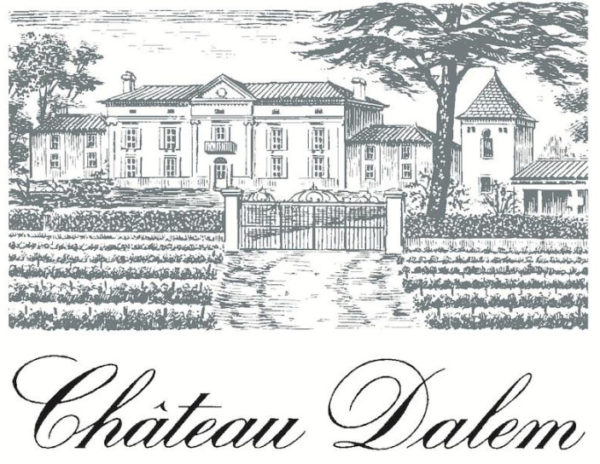
The Estate
Established in 1610, Chateau Dalem is one of the oldest estates in Bordeaux. It was in the possession of the same family for 3 centuries, until 1955 when the property was transferred to Michel Rullier and family. Rullier introduced modern winemaking techniques to the winery which greatly improved the quality of the wines. In 2002, Michel’s daughter Brigitte Rullier-Loussert took over ownership of the estate and, today – together with her son Charles – continues to promote the wines of Chateau Dalem around the world.
Situated on the terroir of Fronsac, overlooking the valley of L’Isle and to the front of Pomerol and the slopes of Saint-Emilion, the estate spans 40 hectares and practices sustainable viticulture. The vineyard is planted with 90% Merlot and 10% Cabernet Franc, and the vines are 40 years old on average.

Chateau Dalem Fronsac
Owner: Brigitte Rullier-Loussert
Technical Director: Sacha Sokoloff
Soil: Clay and limestone
Vinification: The wines are vinified in traditional, temperature-controlled, concrete vats which range in size to accommodate parcel by parcel vinification. Malolactic fermentation is done in barrel.
Aging: Matured for about 18 months in 60% new French oak barrels.
Annual Production: 5,500 cases
Château de Fieuzal
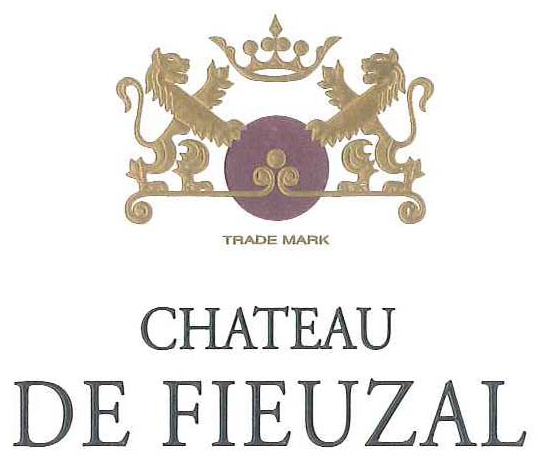
The Estate
Château Fieuzal has been owned and managed for over three centuries by winegrowers in love with their profession. The terroir (soil + microclimate) is exceptionally well-suited to making quality wine. Originally called “Gardères”, the estate takes its name from the Fieuzal family, owners until 1851. Fieuzal’s vines cover some of the finest gravely rises in the entire Pessac-Léognan appellation. The soil is meager, well-drained and naturally conducive to produce great wine. Viticultural methods are traditional and great respect is paid to the environment. The resulting grapes are concentrated and full of all the goodness from the soil. The wines of Fieuzal are rich and opulent, in keeping with their fine worldwide reputation.

Château de Fieuzal Pessac-Léognan Grand Cru Classé
Owners: Brenda and Lochlann Quinn
Production Area: 75 hectares
Production: 114,000 bottles
Soil: Gunz gravel from the Quaternary Period washed down from the Pyrenees, and a mix of clay-limestone and sand.
Grape Varieties: 48% Cabernet Sauvignon, 45% Merlot, 5% Cabernet Franc, 2% Petit Verdot (percentages vary depending on the vintage)
Vinification: Numerous vats in a range of volumes make it possible to separate the vinification of different plots and grape varieties according to their character. Concrete and stainless-steel are crucial for preserving fresh flavors and aromas, used in conjunction with just the right amount of fine French oak to gain complexity without heaviness.
Aging: 12-20 months in barrels (60% new wood)
Tasting Notes: Full, ample bouquet with fragrant aromas of black and red fruits and a hint of oak. Medium to full bodied on the palate with notes of cassis. Ripe tannins; elegant and complex on the finish.
Château de Fonbel
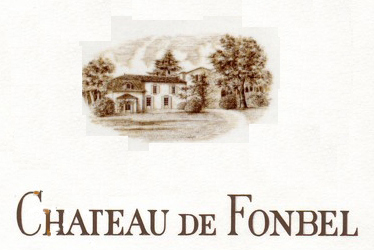
The Estate
Château de Fonbel is located in the Saint-Émilion wine appellation and spans an area of 16 hectares (39 acres). It is owned by Alain Vauthier, proprietor of the celebrated Chateau Ausone and the highly regarded Chateau Moulin St. Georges. Vauthier is assisted by his daughter Pauline, with the support of the winemaker Gilles Pauquet. The soil is composed of clay, sand, and gravel.

Château de Fonbel Saint-Émilion
Grape Varieties Planted: 70% Merlot, 20% Cabernet Sauvignon, 7% Petit Verdot and 3% Carmenere. Chateau Fonbel also has one of the highest portions of Petit Verdot in the Right Bank as well as one of the largest plantings of Carmenere in all of Bordeaux.
Average Age of the Vines: About 20 years of age
Plant Density: 6,000 vines per hectare
Vinification: The wine is vinified in stainless steel, temperature controlled vats.
Aging: 30% new French oak barrels for close to 10 months before bottling
Annual Production: 8,000 cases
2016 Reviews: “…the medium to deep garnet-purple colored 2016 Fonbel has a classic nose of warm red plums, cigar box and black plums with nuances of redcurrants, Sichuan pepper and tar. Medium to full-bodied, the palate delivers a lot of mid-palate fruit with lovely plush tannins and a long refreshing finish.” – 91pts, Wine Advocate
Château Desmirail
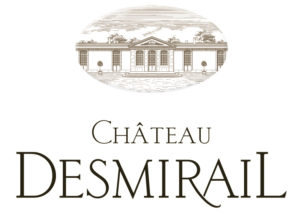
The Estate
The name Desmirail has been associated with wine production in the Médoc region since the end of the 17th century. Jean Desmirail, a lawyer in Bordeaux’s parliament, gave his name to the property when he received it as part of his wife’s dowry.
The château belonged to the Desmirail family until just before the 1855 classification, when it was purchased by Monsieur Sipière, the estate manager at Château Margaux. It was under his ownership that Desmirail was classified as a Troisième Grand Cru Classé.
At the beginning of the 20th century, the property was briefly owned by Robert de Mendelssohn, the nephew of the famous composer, before being acquired by Martial Michel, a glove maker from the north of France. Michel went on to sell the château shortly before the outbreak of World War II to Château Palmer.
The Château Palmer company owned the property for several years before selling it to Lucien Lurton, an iconic figure in the Bordeaux wine world, in 1980.
In 1992, Lucien Lurton passed on his properties to each of his 10 children. Denis, one of the older children and a lawyer by profession, took over the management of Château Desmirail. Today Denis is taking his father’s work even further, modernizing the wine making facilities and putting all of his energy into the development of this Grand Cru Classé.

Château Desmirail Margaux 3ème Grand Cru Classé
Terroir: The vineyard lies on deep valleys that were created during the Quaternary period, between 650,000 and 250,000 years before our era. The gravel and pebbles, derived from the Pyrenee mountains, were transported by the waters of the Garonne and deposited into terrace formations. These deposits were subsequently eroded, so they stand today in the form of gravel ridges culminating around 20 meters. Desmirail is spread over 3 communes of the appellation Margaux: Cantenac, Arsac, and Soussans.
Production Area: 34 hectares
Average Age of the Vines: 25 years old
Plantation Density: 7,692 hl/ha
Grape Varieties: 70% Cabernet Sauvignon, 29% Merlot, and 1% Petit Verdot (percentages differ depending on the vintage)
Vines: These grape varieties are grown using sustainable and environmentally friendly techniques with minimum use of pesticides. The soil is worked in various traditional ways (ploughing into mounds around the base of the vines in the winter, returning of the soil into space between the vines in the spring, etc.) and treatments are adapted to the weather conditions.
Annual Production: 80,000 bottles
Vinification: The grapes are vinified separately by plot and varietal in order to express the diversity of the terroirs. The winemaking takes place in 2 vats: one in wood used for the oldest plots, the other in stainless steel completely renovated in 1997. 40% new barrels.
Serving Temperature: 17 °C
Cellaring Potential: 18 years
2015 Reviews: “…very comely, feminine and perfumed nose brandishing a whole bunch of rose petals in the glass. The palate is very well balanced, fleshy but still structured with fine grain tannin.”-92pts, Wine Advocate
2012 Reviews: “This is a polished, new-wood flavored wine that has hints of mint as well as an herbal character. It’s juicy and soft with black currant fruits lending an attractive aftertaste.”-90pts, Wine Enthusiast
Château Domeyne
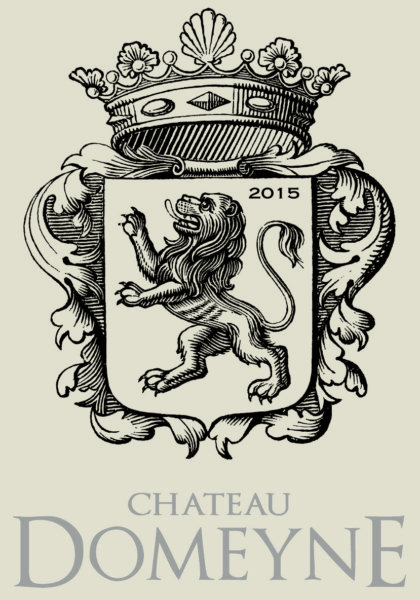
The Estate
Situated on a beautiful hill top of gravel soils, close to several Classified Growth of Saint-Estèphe estates, such as Château Calon Segur, Château Domeyne confirmed its classification as a Cru Bourgeois in 1932 and has won awards for its wines every year. In 2006, the mansion house was bought by Claire Villars Lurton, owner of Château Haut-Bages Libéral and Château Ferrière which are respectively 5th Classified Growth of Pauillac and 3rd Classifed Growth of Margaux, and her husband Gonzague Lurton, owner of Château Durfort Vivens, 2nd Classified Growth of Margaux. They put all their expertise in their efforts to lift this wine to rank among the best in its classification. With this new goal of quality in mind, Claire and Gonzague Lurton are determined to continue the challenge of promoting Château Domeyne to the top.

Château Domeyne Saint-Estèphe
Owners: Claire & Gonzague Lurton
Winemaking Consultant: Eric Boissenot
Production Area: 8.3 hectares
Soil:Clayey gravels
Grape Varieties: 60% Merlot, 40% Cabernet Sauvignon (percentages vary depending on the vintage)
Average Age of the Vines: 40 years old
Vinification: Traditional in concrete and stainless steel vats. Plots selection. Maceration on skins for 24 days
Aging: 20% in new French oak barrels for 12 months
Château du Tertre
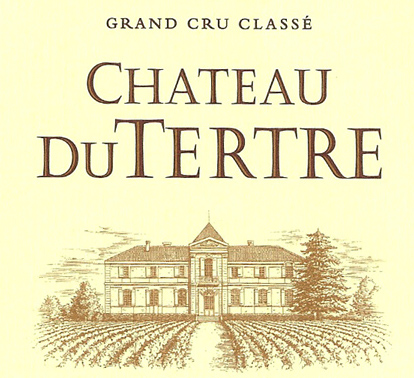
The Estate
Chateau du Tertre is a thousand-year-old estate whose vineyard, stretching over 52 hectares, has remained unchanged since 1855. During the 19th century, Chateau de Tertre wines rose to worldwide fame, especially thanks to the 1855 classification which established the Chateau as a Margaux Grand Cru Classé. 1n 1997, a Dutch businessman named Eric Albada Jelgersma purchased the estate and invested in a large-scale overall restructuring.
Here, the Margaux terroirs are at their highest altitude, with one of the most elevated gravel outcrops of the Médoc. The light and the sunshine which bathe the vines protect them from the late spring frosts. A stream provides natural drainage, separates the two gravels outcrops, and cools the vines, thus giving them the cooler temperatures vital for their development, protecting them both from excess water and drought. Soil maintenance, leaf thinning, and thinning-out allow the characteristics of the terroir to be revealed in the resulting wine.

Les Hauts du Tertre
Overview: This second wine of Château du Tertre comes from a selection of their youngest vines. The vinification and aging benefit from the same care as the Grand Vin.
Terroir: Perfectly drained gravelly knolls from 3 to 5 m
Production Area: 52 ha
Grape Varieties: 43% Cabernet Sauvignon, 33% Merlot, 19% Cabernet Franc, 5% Petit Verdot
Average Age of the Vines: 15-25 years old
Vines: Regular soil working, traditional thinning and manual leaf removal (18 ha grown biodynamic). Double Guyot pruning.
Harvest: Hand-picking followed by hand sorting
Average Yield: 35-45 hL/ha
Vinification: Concrete, wood, and stainless steel tanks. Thermo-regulation. Pumping over varies according to the lots. Temperature during alcoholic fermentation is 25°C. Vatting time is 18-28 days. Horizontal pneumatic pressing.
Alcohol Content: About 13%
Aging: 15-17 months in 100% French oak barrels (fine grain and medium toast); 45% new oak, 55% oak of 1 wine. Racking every 5 months with candle. Egg white albumen fining.
Château Ducru-Beaucaillou
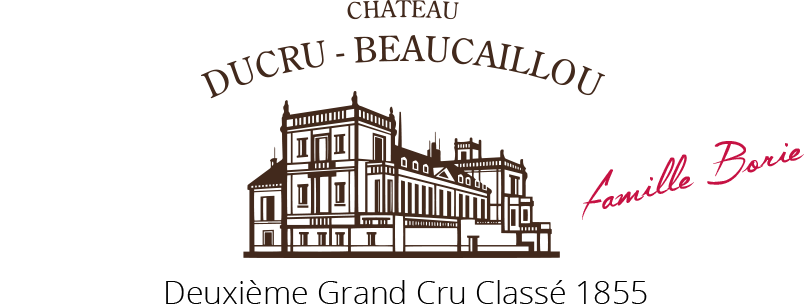
Overview
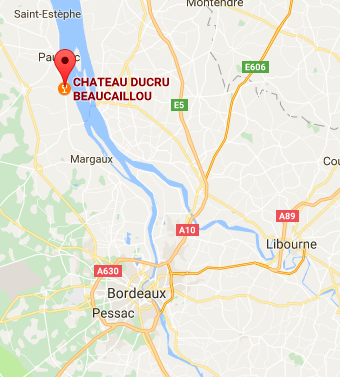 Château Ducru-Beaucaillou is a winery in the Saint-Julien appellation of the Bordeaux region of France. Château Ducru-Beaucaillou is also the name of the red wine produced by this property.
Château Ducru-Beaucaillou is a winery in the Saint-Julien appellation of the Bordeaux region of France. Château Ducru-Beaucaillou is also the name of the red wine produced by this property.
The wine produced here was classified as one of fifteen Deuxièmes Crus (Second Growths) in the original Bordeaux Wine Official Classification of 1855. Château Ducru-Beaucaillou is named after the beautiful, large stones found in its unique wine-growing terroir. This exceptionnal ecosystem produces fine, elegant, tasty wines, with a long finish – in short, archetypal Saint-Julien wines.
Perched on an exceptional site with incomparable views over the Gironde estuary, in the centre of a hundred-year-old park, Ducru-Beaucaillou is a majestic, Victorian-style castle, which has, over time, become one of the great symbols of the Médoc. Unusually for Bordeaux, it is built directly above the barrel cellars, enveloping its owners, who have lived here for over sixty years, in the sumptuous aromas of their wine. Today, the estate is managed by the company Jean Eugène Borie SA, which is owned by Mrs Borie, her daughter Sabine Coiffe and her son Bruno-Eugène. CEO since 2003, the third generation of the Borie family to head the estate. There are very close links between this estate and the five families who have been its successive owners.
History
The history of Château Ducru-Beaucaillou is closely linked with that of the five families who have owned it and lived in it since it was built in 1720. One of the 61 red ‘grands crus’ classified as a second cru in the famous Bordeaux Wine Classification of 1855, it has been in the Borie family for over 60 years. Today, while many Bordeaux chateaux are owned by remote conglomerates or absent landowners, the borie family lives on the estate on a daily basis and continues to put its imprint on his highly reputed estate, with the assistance of loyal and enthusiastic team.
The Terroir
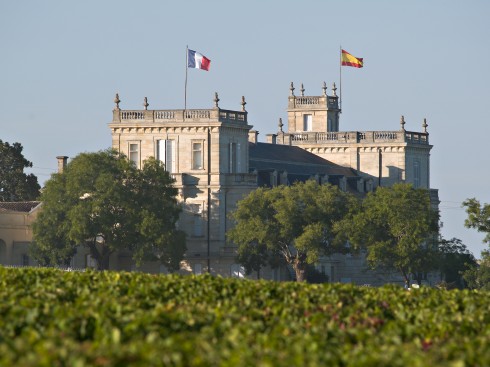 Château Ducru-Beaucaillou, whose origins lie in the early 18th century, owes its name to the ‘beautiful stones’ that characterise its terroir and whose exceptional wine-making assets translate into the finesse and elegance of its wines. It is because of its terroir that Ducru-Beaucaillou is often considered the epitome of the Saint-Julien AOC label. It is one of the 14 second crus from the 1855 classification, which includes 61 of the 75 best Bordeaux wines and one of the rare wines in the « super seconds » category. Château Ducru-Beaucaillou and its vines are perched on a magnificient site in the Médoc, offering incomparable views over the Gironde estuary which, almost 4 miles wide at this point, creates its own micro-climate. It is one of the only castles in Bordeaux to be built directly of the cellars, and one of the only ones still inhabited by its owners.
Château Ducru-Beaucaillou, whose origins lie in the early 18th century, owes its name to the ‘beautiful stones’ that characterise its terroir and whose exceptional wine-making assets translate into the finesse and elegance of its wines. It is because of its terroir that Ducru-Beaucaillou is often considered the epitome of the Saint-Julien AOC label. It is one of the 14 second crus from the 1855 classification, which includes 61 of the 75 best Bordeaux wines and one of the rare wines in the « super seconds » category. Château Ducru-Beaucaillou and its vines are perched on a magnificient site in the Médoc, offering incomparable views over the Gironde estuary which, almost 4 miles wide at this point, creates its own micro-climate. It is one of the only castles in Bordeaux to be built directly of the cellars, and one of the only ones still inhabited by its owners.
Ducru-Beaucaillou has belonged to the Borie family for over sixty years. They now run the estate as a limited company, with Monique Borie and her daughter Sabine Coiffe on its board and son Bruno-Eugene as CEO. The wine-making terroir of Ducru-Beaucaillou and its elevation are highly conductive to the production of fine wines. The communal terroir of Saint-Julien (800 Ha) is characterised by a layer of Garonne, or Günz gravel dating from the early Quaternary period blown by the wind from east to west, ending up as tiny white gravel stones and sand on the western side of the area coming under the appellation. The 75-hectare vineyard of Ducru-Beaucaillou lies on the eastern edge of this great communal terroir.
Topographically, the vineyard of Beaucaillou starts immediately above the low-lying marshland of the Gironde, 800 meters from the estuary and extends to the west, ending at about 16 meters above sea level, a location that offers natural drainage of rainwater into the Gironde to the east or the tiny Mouline brooks to the north.
6-8 meters layer of Günz Gravel deposited by the Garonne 2 millions years ago
Advantages offered by the stones :
- Encouraging ground drainage
- Reflecting the sun onto the closely-planted grapes
- Storing daytime heat to recycle it at night
- Forming a protective layer that stops the ground from drying out during summer heat waves and other dry periods
This gavrel lies on a teriary substratum made of Oligocene mud and deposits of Eocene limestone.
Local climate more temperate : warmer in winter, colder in summer. Near the Gironde, local wine-makers are spared much frost and hailstorms.
Acreage : 75 Ha
Average age of the vines : 35 years old
Vineyard Density : 10.000/Ha
Harvest : manual
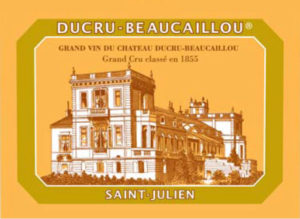
Château Ducru-Beaucaillou Saint-Julien Grand Cru Classé
Grape Varieties: Cabernet Sauvignon, Merlot
Aging: 18 months in 50-80% new barrels (French oak)
Production Area: 75 hectares
Average Age of the Vines: 35 years old
The Vines: The vineyard is planted with 70% Cabernet Sauvignon and 30% Merlot. Fertility is moderated and a root network develops (reaching up to 6 meters deep), both reducing the effect of climatic excess and increasing the take-up of nutrients from the soil and subsoil. Meticulously exploring the poor, arid soil to find the necessary nutrients and water, the roots carry back the trace elements which give the wine its uniqueness: this is the essence of the terroir of Ducru-Beaucaillou.
Plant Density: 10,000 vines per ha. This high density reduces the production of each plant while creating competition between the vines that will search deeper down into the soil to find their nutriment (“vines must suffer in order to produce”). It also generates a microclimate with many an advantage: 1) Maximizing the leaf surface per hectare and therefore the rainwater consumption which are particularly profuse in our Atlantic climate 2) Creating ideal conditions for the grapes.
Harvest: The grapes are all harvested manually. They are sorted in the vines on mobile tables to avoid contact between unhealthy and healthy grapes during transport to the vat room.
Vinification: The vinification of each plot is done individually to optimize the choice of blends. Moreover, the fermentations are carried out separately and customized to take account of terroir, grape variety, and vintage characteristics. The grapes undergo a gentle extraction and the must is kept at traditional temperatures with moderate lengths and frequencies of pumping-over. The press drains off continuously into barrels to facilitate the selection of the press-wine batches. Malolactic fermentation is managed in vats for optimal control. The wine is barreled in duly identified individual batches immediately after malolactic fermentation. Blending takes place during the first racking operation; for Ducru Beaucaillou, between 50 and 80% of new barrels are used according to the richness of the vintage. The barrels (225L Bordeaux barrels, French oak) are supplied by 5 carefully selected cooperages giving every guarantee.
Aging: The wine is matured for 18 months in accordance with Medoc traditions for classified growths. Bottling is performed with special care in regard to both oenological controls and homogenisation of the overall batch. The 5 cork makers supplying the estate have signed a detailed and stringent quality charter.
1998 Reviews: “A supremely elegant, dense purple-colored effort, the 1998 reveals aromas of cassis, black raspberries, minerals, and currants. Precise, well-delineated, and medium to full-bodied, with magnificent purity and understated elegance…”-91pts, Wine Advocate
1988 Reviews: “Shows outstanding structure and definition. New oak comes through in the coffee and plum aromas and the palate is firm and concentrated, with delicious blackberry flavors.”-92pts, Wine Spectator
1982 Reviews: “…one of the all-time great Ducrus…it exhibits a dense ruby/plum/garnet color to the rim as well as a sweet perfume of forest floor, spice box, cedar, and copious quantities of black fruits. Medium to full-bodied and beautifully pure with sweet tannins, this wine has aged more slowly than I initially expected. It is the finest Ducru Beaucaillou produced after the 1961 and before the 2003…”-96pts, Wine Advocate
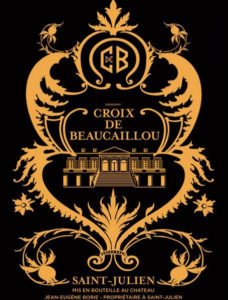
Croix de Beaucaillou
Overview: This is the second wine of Château Ducru-Beaucaillou. La Croix de Beaucaillou is produced from the same vineyard as the first wine.
Harvest: The grapes are all harvested manually. They are sorted in the vines on mobile tables to avoid contact between unhealthy and healthy grapes during transport to the vat room.
Vinification: The vinification of each plot is done individually to optimize the choice of blends. Moreover, the fermentations are carried out separately and customized to take account of terroir, grape variety and vintage characteristics. Extraction is gentle and the must is kept at traditional temperatures with moderate lengths and frequent pumping-over. The press drains off continuously into barrels to facilitate the selection of the press-wine batches. Malolactic fermentation is managed in vats for optimal control. The wine is barrelled in individual batches immediately after malolactic fermentation. Blending takes place during the first racking operation; for La Croix de Beaucaillou, between 20-40% of new wood is used depending on the richness of the vintage. The barrels (225L Bordeaux barrels, French oak) are supplied by 5 carefully selected cooperages.
Aging: The wine is matured for 12 months. Bottling is performed with special care in regard to both oenological controls and homogenisation of the overall batch. The 5 cork makers supplying the estate have signed a detailed and stringent quality charter.
2017 Reviews: “This wine has structure and dense tannins that come from the dominant Cabernet Sauvignon. Black-currant flavors are layered within the ripe structure of a fruity wine with a great future. Drink from 2024.” – 94pts, Wine Enthusiast
2015 Reviews: “This wine, from a selected parcel of the Ducru-Beaucaillou vineyard, is packed with both tannins and great fruit. Its structure promises aging while its concentration and black fruits are already impressive. This is a rich wine but one that has the classic elegance of Saint-Julien.” – 94pts, Wine Enthusiast
2014 Reviews: “This is an exceptional vintage for La Croix. It has voluptuous fruits that emerge from the ripe dense tannins. They are balanced by intense acidity and a crisp edge. The wine, with its still stylish character, is one to age for a long time. Drink this very fine wine from 2025.” – 94pts, Wine Enthusiast
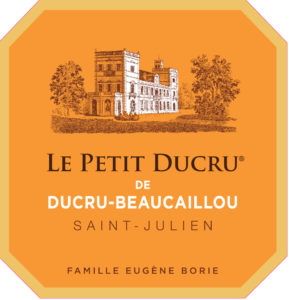
Le Petit Ducru De Ducru Beaucaillou Saint-Julien
Overview: This newcomer is a selection derived from the St-Julien vineyards. An affectionate and informative name that already tells wine lovers something about its positioning and its ambitions.
Le Petit Ducru portends an introduction to the Borie signature, a courteous invitation to approach the qualities of its elders, Ducru-Beaucaillou and La Croix Ducru-Beaucaillou; from its complexity to its structure, by way of its balance and its elegance. There is, of course, a family resemblance, a wonderful complicity between the three nectars. They know what they have in common: a rigorous technical process, drastic selection, demanding winemaking.
A nod also to the history of the estate, specifically to one of the former owners, Bertrand Ducru (1770-1829), a brilliant and worldly merchant from the Bearn region of France, situated along the flanks of the western Pyrenees mountains. Powerful and well established, he bought the property in 1797 (16 Vendémiaire, year 6) and added his surname to that of the site, which then became “Ducru-Beaucaillou”. He hired the architect, Paul Abadie, graduate of the acclaimed Ecole des Beaux-Arts de Paris, to enhance the elegant Directory-period chartreuse. But above all, he invested heavily in the vineyards and the cellar. The wines quickly rose to the summit of the appellation and Ducru-Beaucaillou obtained unanimous recognition from the Place de Bordeaux, which later consecrated it with a place in the 1855 classification.
Grape Varieties: A Cabernet-Merlot blend and depending on the vintage, sometimes with a hint of Petit Verdot, varietal that we know to be a skillful sculptor.
Aging: Barrel aging lasts for 12 months with one-third new oak.
Tasting Notes: Le Petit Ducru is a wine of balance and harmony. An elixir of youth. It is there, alive and well, a rendezvous with pleasure. Accessible from its earliest youth, uninhibited in its Chaplinesque antics. It will make for a happy dining companion in restaurants. It will make for a perfect marriage with poultry where it will bow down before its crispy, brown skin and envelop the steaming flesh with its tannins.
Le Petit Ducru tastes of Sundays. Above all, it tastes of friendship.
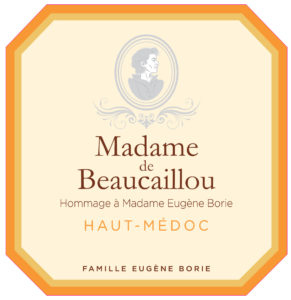
Madame de Beaucaillou Haut-Médoc
Overview: This new wine comes from vineyards located in Haut-Médoc; plots brought by Madame Eugène-Borie on her marriage and more recently by the acquisition of plots from Madame Fort-Pradère. A tribute to the woman who chaired the Supervisory Board from 1998 until 2020, but also to an attentive and loving mother. To the muse too. The opportunity to put the spotlight on this great lady who, out of discretion and humility, was content to stay in the shadows. Gently, calmly, her image will join the long line of female owners of Ducru-Beaucaillou, equally inspiring and demanding: Marie Desjean, Marie du Luc Ravez, Lucie-Caroline Johnston, Princesse Marie Karadja de Constantinople, Mary de Burke… All of them had an essential role in the rise to fame of Ducru-Beaucaillou. Strength and grace…
Vinified by the Ducru-Beaucaillou SA teams, this wine receives the best care: the technical winemaking process, very selective blending, and careful aging for 12 months in barrel (including 20% new oak). Technique at the service of purity of expression. Merlot and Cabernet Sauvignon rub shoulders without ever competing; one brings opulence, the other brings structure. In blends, as in marriage, it is complementarity, mutual exaltation that counts.
Grape Varieties: Merlot Noir, Cabernet Sauvignon, Petit Verdot, Cabernet Franc
Alcohol: 14.0%
Aging: 12 months in Bordeaux barrels, 20% in new oak and the balance in one-year barrels (twelve months). The oak is of certified French origin, naturally dried outdoors for a guaranteed minimum of three years. Regular topping-up during the first six months, racking every two or three months with a total of four rackings. Sterile bottling under inert gas take place in June/July 2021. 49 mm natural cork.
Cellar Master Tasting Notes: “Colour: bright, deep, purple. Nose: very charming and refined. Fresh, fruity, underpinned by a note of French oak, Morello cherry jam, violet. Spicy notes on aeration. Palate: clean attack, silky tannins. A pleasurable wine, delicious, subtle and seductive. Beautiful harmony and elegant femininity.”




